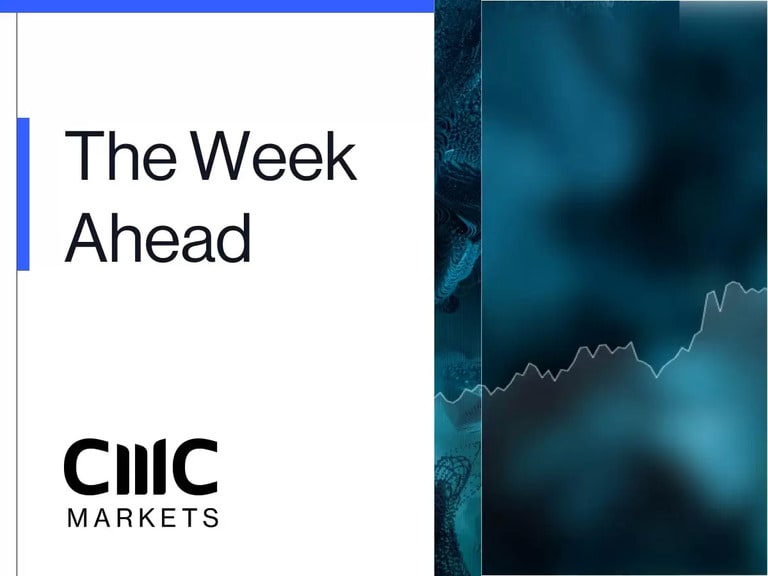Markets in Europe look set to start the week in a positive fashion despite the tumbles seen on Friday, which saw the FTSE100 post its worst one day fall since October last year.
The slightly more positive tone appears to be as a result of a pause in the move higher in yields, as bond markets stabilise after the choppiness seen at the end of last month, with markets in Asia enjoying a solid rebound after the big falls on Friday.
Despite the big falls at the end of last week, we still managed to finish the month higher, albeit by a fairly small margin, as did other markets in Europe.
US markets also finished the week on the back foot, but again still managed to post a monthly gain, which when you consider how far yields have risen over the same period, would suggest that investors aren’t panicking yet, despite the uncertainty about the effects.
Over the same period of time, we’ve seen US 10-year yields rise from 1.06%, hit a peak of 1.6085% before falling back to close just above 1.4% as markets start to price in the prospect of some form of tightening in financial conditions, earlier than was being priced in at the beginning of the year.
The sharp decline in yields from their highs of last week, suggests there is still a fair degree of uncertainty about their overall future direction, in light of the rapid speed of the moves seen in the past few days.
One of the reasons behind the sharp fall in bond prices has been an expectation that the new $1.9trn stimulus plan, which passed through the House of Representatives at the end of last week, and now about to make its way through the Senate, could set off an inflationary impulse with markets starting to price in the prospect of a rate rise next year, and potentially another one the year after.
This reasoning hasn’t been helped by a sharp shift in market concerns about what is being called the reflation trade, and the moves being seen in the commodity space, with sharp rises in crude oil, nickel, tin and copper prices.
The rise in copper prices in particular has been especially notable, hitting 10-year highs last week, and its biggest monthly gain since December 2010. In the past 12 months the price of copper has doubled and appears to be predicated on the belief that demand is likely to outstrip supply for years to come as the focus inexorably shifts towards renewables. As a highly efficient generator of electricity, as well as heat, it is expected to be in high demand in the production of solar, thermal and wind energy systems, as well as electric vehicle production.
Quite simply there is no other metal that comes close, though we have also seen decent gains in the prices of tin and nickel, both of which are also used extensively in the production of electric vehicles.
These gains came to a sudden halt at the end of last week as, along with crude oil prices, we started to see a sharp pullback. Given the concerns about rising pricing pressures, this could well be the catalyst that starts to see yields stabilise, thus taking the heat out of the worries that further rises in yields could prompt a further tightening of financial conditions.
This week is likely to be a key test for copper, if we get further sharp declines, this might take off some of the upward pressure off bond yields.
While central bankers have been at pains to play down the effects of this upward move in yields, markets do appear to be in the mood to test their resolve in this regard in the coming days, with a host of Fed speakers due to speak over the next few days culminating with Fed chair Jay Powell on Thursday, when he is due to speak on the US economy at a virtual event hosted by the Wall Street Journal.
The European Central Bank has already expressed its concern over the recent jump higher in yields, and while the recent falls in commodity prices might buy some respite, if we continue to see yields edge higher, then the calls for the ECB to do more to keep yields down will get louder.
This is likely to be even more important given that the economy in Europe is still struggling with rising cases of coronavirus and a vaccination program that is stalling, due to unease among populations about the efficacy of the Oxford vaccine.
Today’s manufacturing PMI for February for Spain Italy, France and Germany will only be telling half the story, with services still struggling, and while their outperformance is welcome, this may not last.
For now, expectations are for a certain amount of resilience with readings of 52.1, 57, 55 and 60.6 respectively, while in the UK we can expect to see a fairly steady 54.9.
With the UK budget only two days away mortgage approvals for January are expected to remain close to 100k, after rising to 103.4k in December. The Chancellor is expected to extend the stamp duty holiday, which is due to expire at the end of this month for another three months to give more time to get through the backlog of completions that have built up in the past few months.
The pound has also got off to a positive start ahead of this week’s budget as optimism over the vaccine rollout, which passed the 20m at the weekend, fostered optimism over an economic rebound that is likely to be much faster than its peers in Europe.
EURUSD – last week’s brief spike up to 1.2240 proved to be short lived, with the break back below the 50-day MA, offering the potential for further losses on a break below 1.2050 towards the February lows at the 1.1950 area.
GBPUSD – the sharp reversal from the 1.4240, suggests we may well have seen a short-term top. The bias remains for a move towards the 2018 peaks at 1.4380, but we can’t rule out the prospect of a dip back to the 1.3820 area, and the 50-day MA now that we’ve broken below 1.4070.
EURGBP – last week’s rebound from the 0.8540 area followed through all the way to the 0.8730 area, where we saw some modest resistance. The strength of the rebound suggests we might squeeze higher towards 0.8800. We need to break above the 0.8730 area first, and hold above the 0.8620 area.
USDJPY – while in the uptrend from the January lows the next target looks to be the 107.20 area. Trend line support now comes in at 105.20. Below that targets the 103.80 area.
CMC Markets erbjuder sin tjänst som ”execution only”. Detta material (antingen uttryckt eller inte) är endast för allmän information och tar inte hänsyn till dina personliga omständigheter eller mål. Ingenting i detta material är (eller bör anses vara) finansiella, investeringar eller andra råd som beroende bör läggas på. Inget yttrande i materialet utgör en rekommendation från CMC Markets eller författaren om en viss investering, säkerhet, transaktion eller investeringsstrategi. Detta innehåll har inte skapats i enlighet med de regler som finns för oberoende investeringsrådgivning. Även om vi inte uttryckligen hindras från att handla innan vi har tillhandhållit detta innehåll försöker vi inte dra nytta av det innan det sprids.






